Abstract
We evaluated a systematic means of determining stimulus preferences among seven profoundly handicapped persons. Preferences were determined by observing student approach responses to individual stimuli. Results indicated that there were differential stimulus preferences across the multiply handicapped participants. However, results of the systematic assessment did not coincide with the results of a more traditional, caregiver-opinion method of assessing student preferences. A second experiment was then conducted with five participants to evaluate whether stimuli that were assessed to consistently represent preferences would function as reinforcers in skill training programs. Results indicated that stimuli that were systematically assessed to represent student preferences typically functioned as reinforcers when applied contingently. However, preferred stimuli as reflected by caregiver opinion did not function as reinforcers unless those stimuli were also preferred on the systematic assessment. Results are discussed in terms of assisting profoundly handicapped persons by (a) improving the effectiveness of training programs by increasing the likelihood of using stimuli that have reinforcing value and (b) increasing the overall quality of life by providing preferred stimuli in the routine living environment.
Full text
PDF

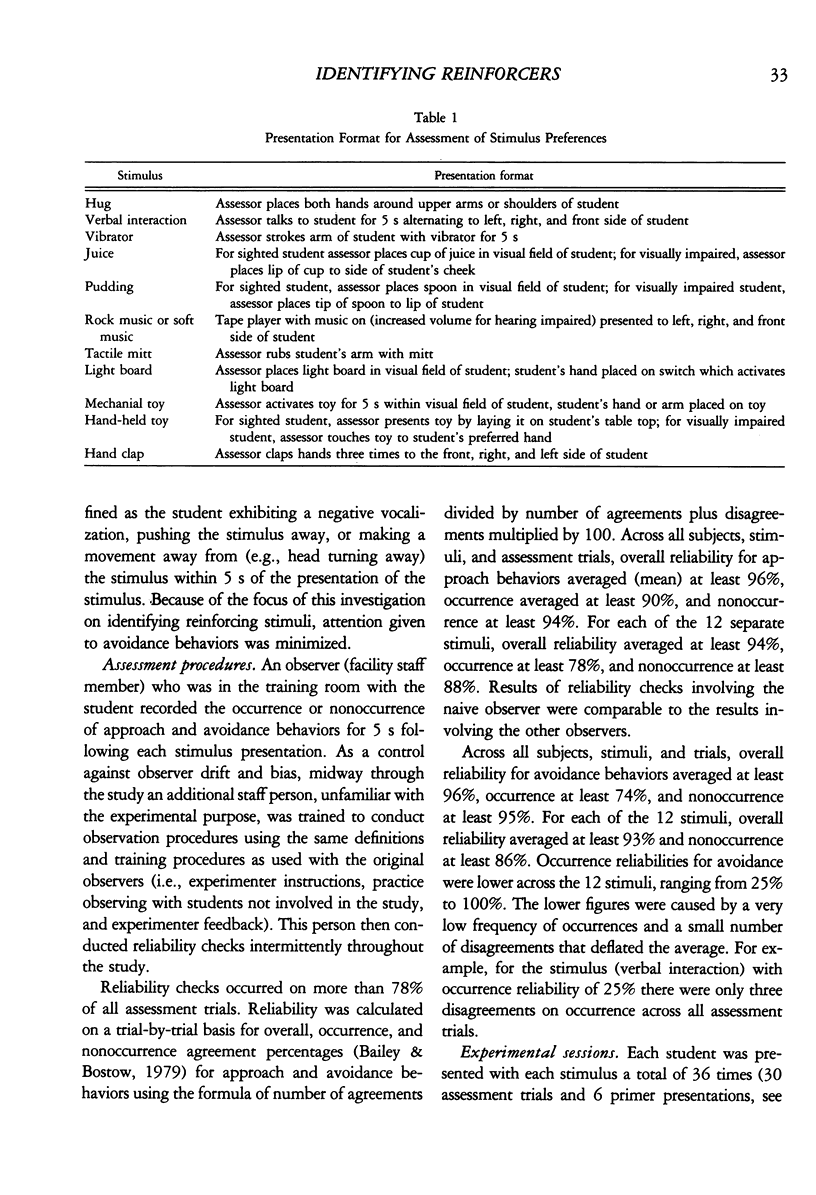
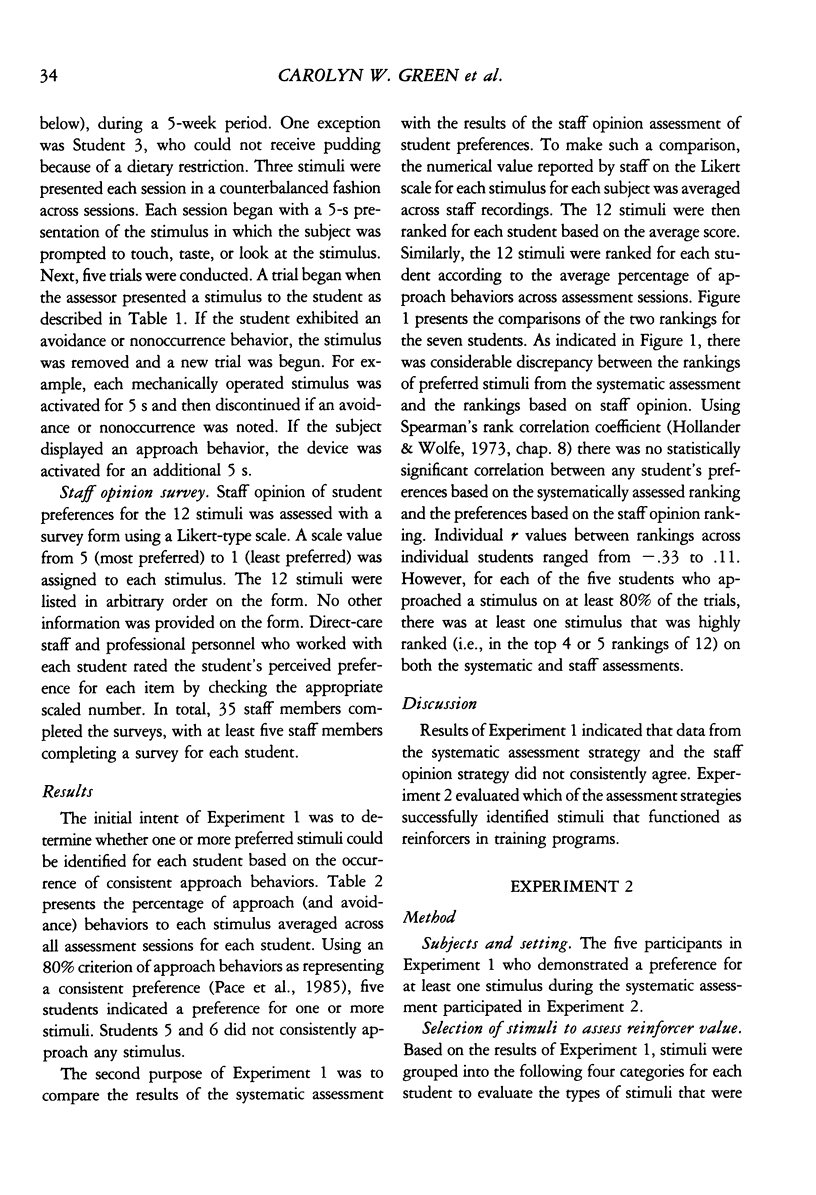



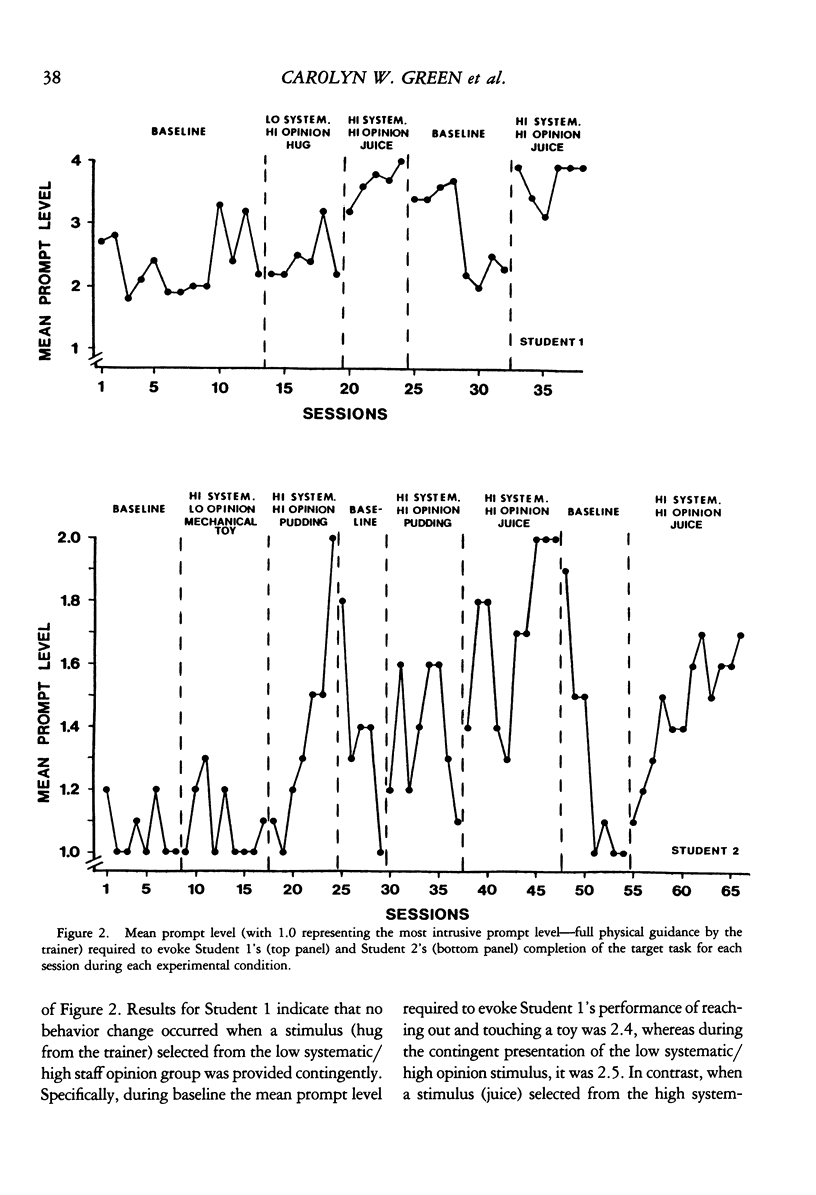

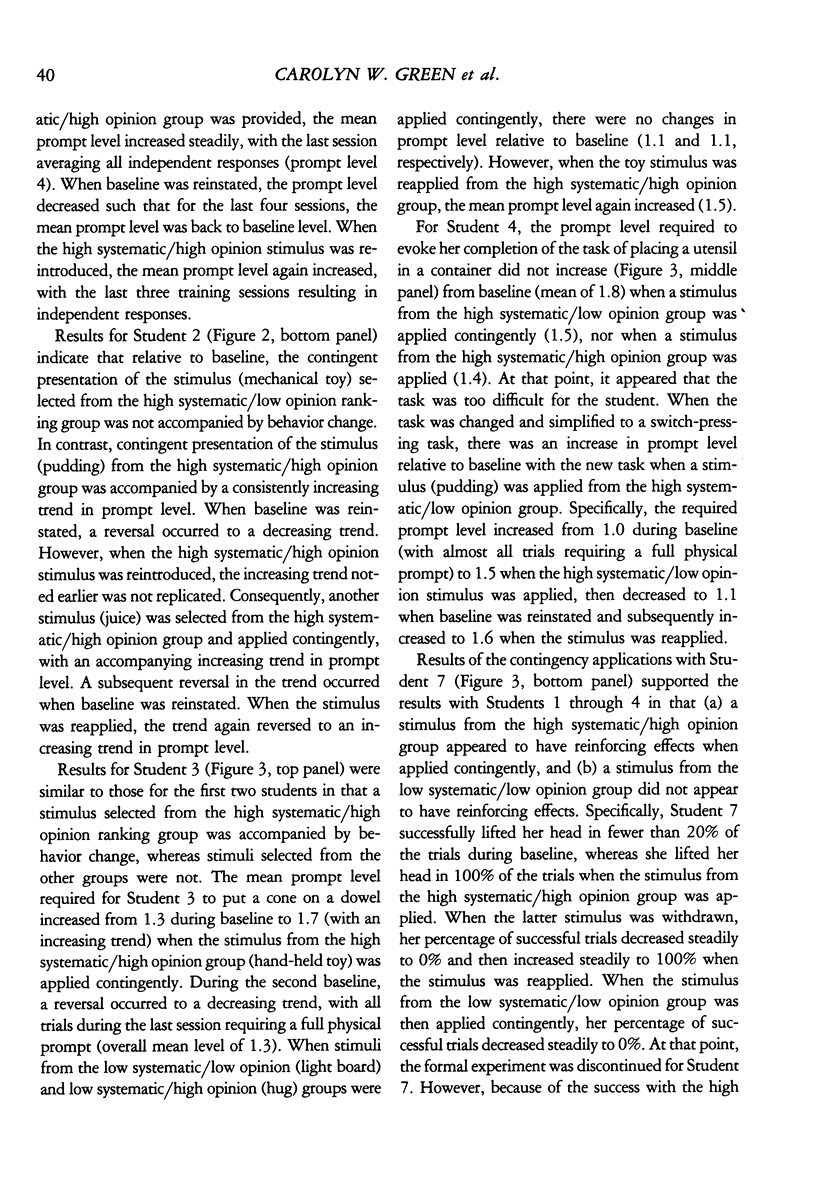

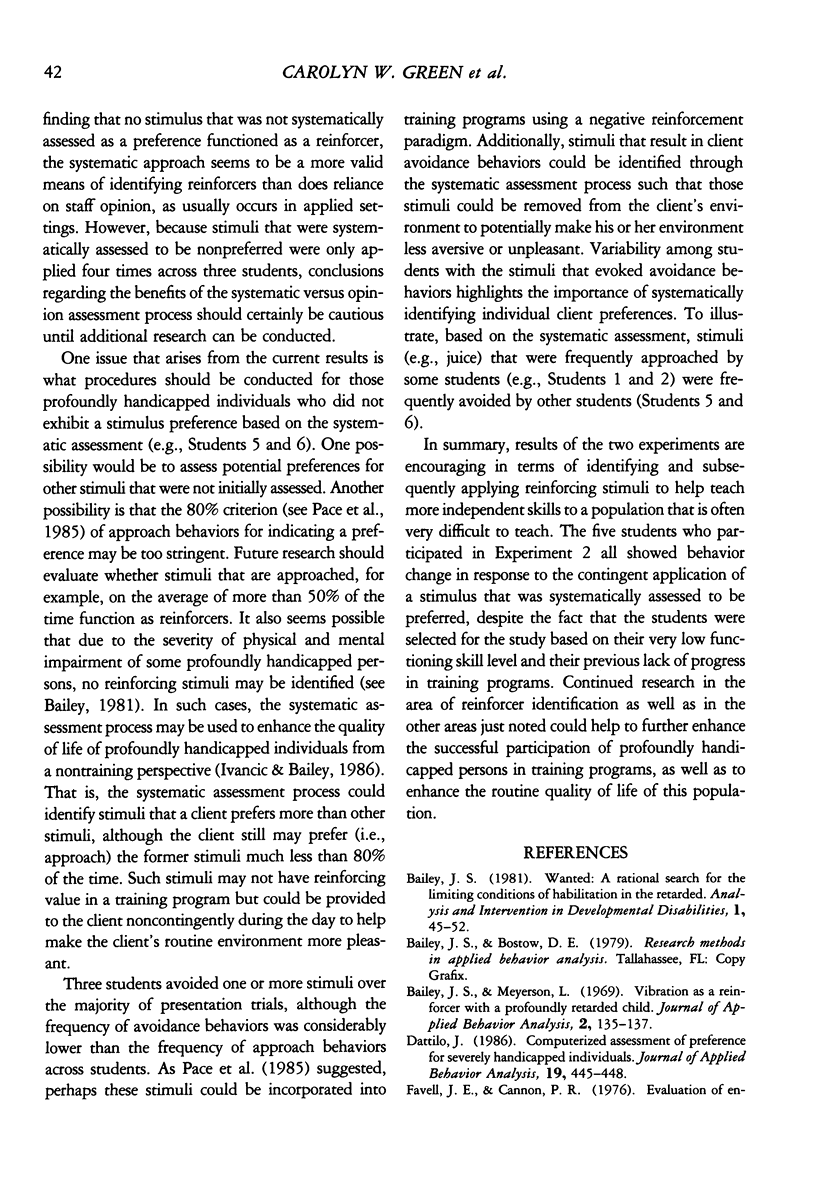
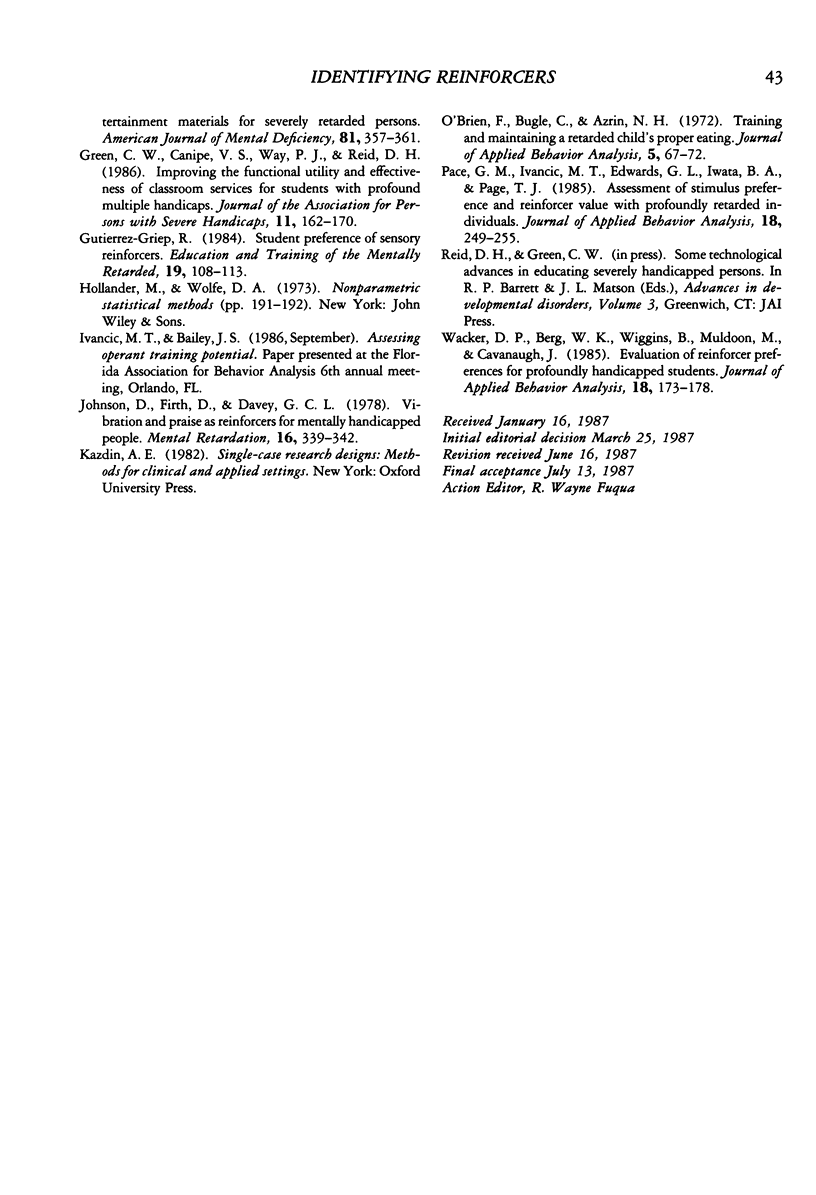
Selected References
These references are in PubMed. This may not be the complete list of references from this article.
- Bailey J., Meyerson L. Vibration as a reinforcer with a profoundly retarded child. J Appl Behav Anal. 1969 Summer;2(2):135–137. doi: 10.1901/jaba.1969.2-135. [DOI] [PMC free article] [PubMed] [Google Scholar]
- Dattilo J. Computerized assessment of preference for severely handicapped individuals. J Appl Behav Anal. 1986 Winter;19(4):445–448. doi: 10.1901/jaba.1986.19-445. [DOI] [PMC free article] [PubMed] [Google Scholar]
- Johnson D., Firth H., Davey G. C. Vibration and praise as reinforcers for mentally handicapped people. Ment Retard. 1978 Oct;16(5):339–342. [PubMed] [Google Scholar]
- O'brien F., Bugle C., Azrin N. H. Training and maintaining a retarded child's proper eating. J Appl Behav Anal. 1972 Spring;5(1):67–72. doi: 10.1901/jaba.1972.5-67. [DOI] [PMC free article] [PubMed] [Google Scholar]
- Pace G. M., Ivancic M. T., Edwards G. L., Iwata B. A., Page T. J. Assessment of stimulus preference and reinforcer value with profoundly retarded individuals. J Appl Behav Anal. 1985 Fall;18(3):249–255. doi: 10.1901/jaba.1985.18-249. [DOI] [PMC free article] [PubMed] [Google Scholar]
- Wacker D. P., Berg W. K., Wiggins B., Muldoon M., Cavanaugh J. Evaluation of reinforcer preferences for profoundly handicapped students. J Appl Behav Anal. 1985 Summer;18(2):173–178. doi: 10.1901/jaba.1985.18-173. [DOI] [PMC free article] [PubMed] [Google Scholar]


